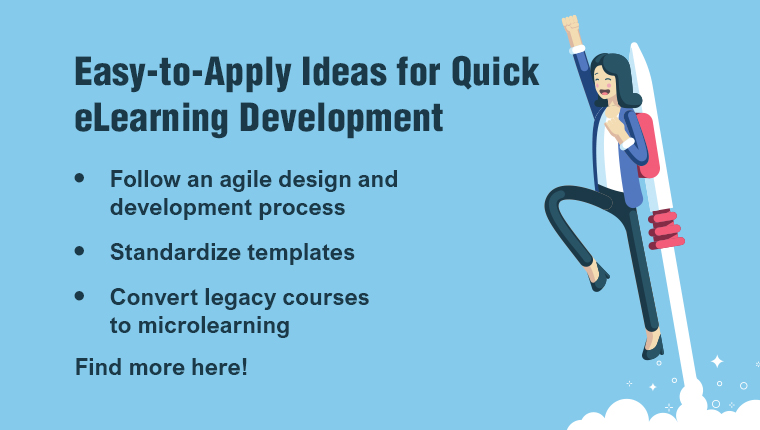7 Habits of Highly Effective L&D and Training Managers

Steven Covey, in his iconic book, Seven Habits of Highly Effective People, encapsuled a hundred years of success literature into a compact tome, well-written, easily understood style, inter spread with diagrams, anecdotes, and real-life examples, both from his personal and professional experiences. Doubtless, Covey was a master teacher, worth admiration, and emulation. It is indeed a book that must be read multiple times and kept at an arm’s reach for regular reference. While I was going through it for yet one more time, it occurred to me that the path-breaking 7 habits can be easily applied to L&D managers, training managers, trainers and even instructional designers and courseware developers.
Habit 1: Be Proactive
As we know, being proactive is a lot more than taking initiative. It is that, of course, but remember that sometimes not acting is also being proactive (say, in an emotionally charged situation, it is better to hold your peace!). My understanding of being proactive is taking responsibility for one’s actions (or inactions) and the concomitant consequences. Blaming is probably an opposite of proactivity. When it comes to us, learning professionals, we need to take initiative, and responsibility of our actions and consequences when it comes to line managers. Most training managers resort to putting everything on the line managers’ plate – that they don’t appreciate training, or they tell them which program to conduct or design, and they don’t give enough time for discussing their training needs… Let’s be proactive to take appropriate actions and be courageous enough to take the responsibility for the consequences thereof.
Habit 2: Being with the End in Mind
This habit is so obvious and commonsensical that in hindsight most of us say, but of course! Yet, how many of us begin designing a course without thinking of its learning objectives? To paraphrase Maxwell Maltz, from his book, Psycho Cybernetics, the human brain is like a guided missile system. For the system to be successful, its target should be set with great precision, and then it should be left alone to achieve it. It will improvise and pursue its target till it is destroyed. Similarly, always start with the business results, performance goals and learning objectives, before you even look at the content and start to think of instructional strategies, engagements, and assessments. Your brain will then create the most effective program.
Habit 3: Put First Things First
Prioritize your actions based on the priorities of your internal customers. It is not your priorities but theirs that should take precedence. If your stakeholder wants a quick-and-dirty, economical rapid e-learning because of paucity of time and money, deliver that, not what the ideal high-end one you think should be given. Not putting first things first, reminds me of a marketing concept called “marketing myopia”, which is used to describe an undue love marketers have for their products. They look into the mirror (their products) instead of out of the window (his customer’s changing needs). Like products are to satisfy customer needs, training programs are to be designed to satisfy your customer’s training needs. Don’t love your training programs, focus on your stakeholder’s needs.
Habit 4: Think Win-Win
As Training and L&D Managers, we interact and work with several stakeholders and partners. Line managers, SMEs, Learners, vendors and so on. If we focus on this ultimate reality that in the long run, only win-win will sustain and give us a big win, it will be good for all concerned. Win-Lose, Lose-Win or even just Win will eventually degenerate into Lose-Lose because the other positions will ultimately reveal to the players that it is eventually Lose-Lose and therefore they will quit playing with us. Probably, that is when we start looking out for a change!
Habit 5: Seek First to Understand, Then to Be Understood
How much time do we spend with our stakeholders and learners? How much time do we spend in diagnosis as compared to prescription? If we have designed a product training or compliance course, did we talk to the product managers and the sales reps? Or with the front-office staff about a Dawn Raid training? We need work with our stakeholders more than we work with our content, authoring tools or LMS’ and their lifeless reports. Next time, you are asked to put together a customer service training program, start with sitting in your customer service call center executives for a day and see the difference in your output (enjoy the smiles on your stakeholder and learners’ faces).
Habit 6: Synergize
Covey posits that synergy means 1+1 is greater than 2. If you happen to observe nature, it is a perfect example of synergy and interdependence to create an unimaginably intricate yet simple and efficient system that give out so much as compared to what it takes in. For us humans, it looks like we are blind to this reality. We operate from a sense of scarcity, insecurity, and power-hunger. If we bring in synergy with our stakeholders, SMEs, and vendors, we can achieve a lot more. Funnily, there is no proper the antonym of synergy, even though “non-cooperation” is more prevalent than “cooperation”.
Habit 7: Sharpen the Saw
Physician heal thyself. As a member of the learning fraternity, how much of learning do you personally do? We must dedicate time to keep abreast of the latest developments in our field. It is not only to sharpen our saw but also as learning leaders, we need to walk our talk. Let’s make a development plan for ourselves, monitor our progress, and always have learning goals in our sights.




![How to Level-Up eLearning Courses Using Adobe Captivate? [Infographic]](https://blog.commlabindia.com/hubfs/blogs/improve-elearning-course-adobe-captivate-info.jpg)
